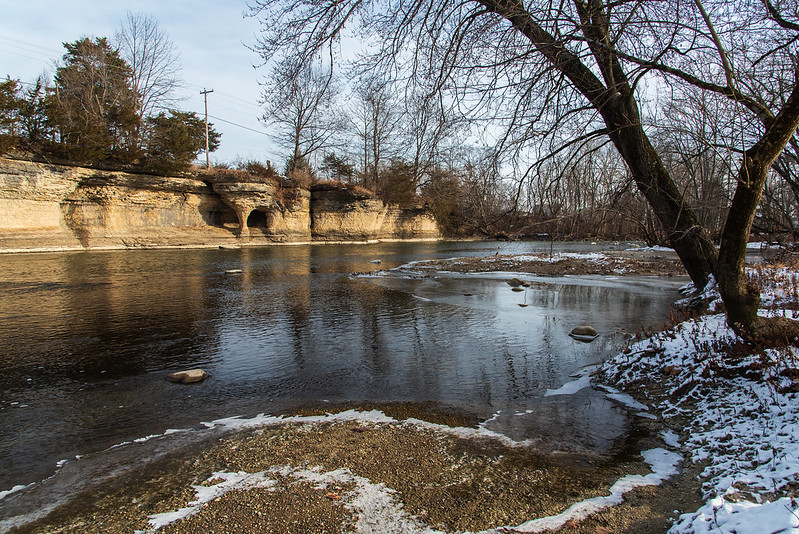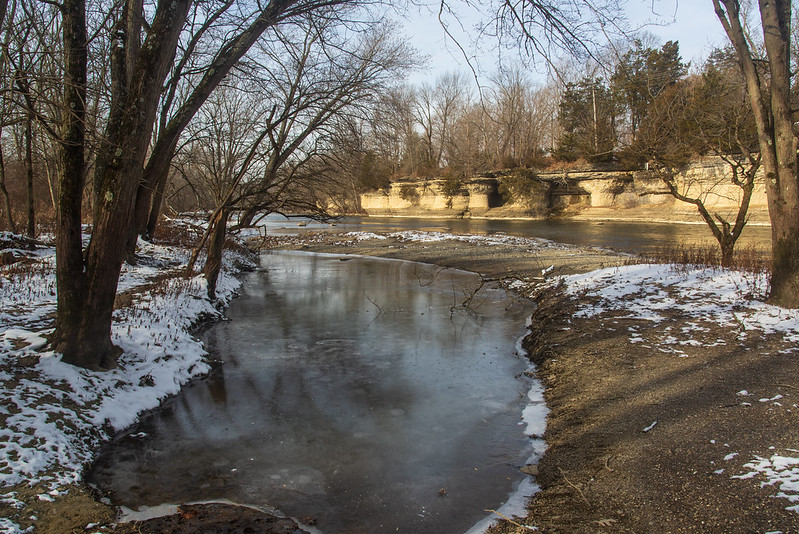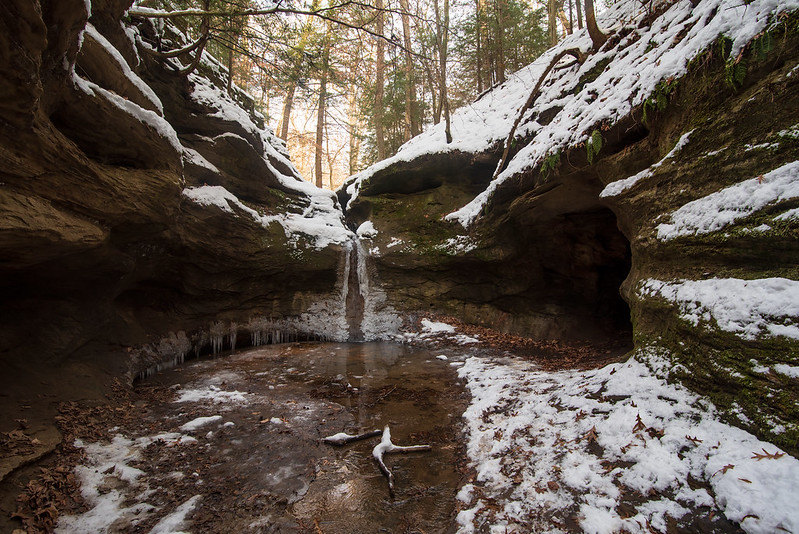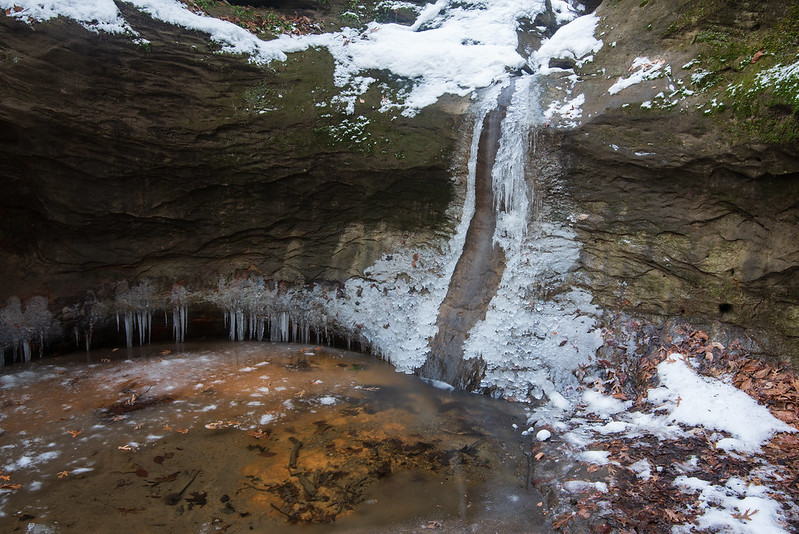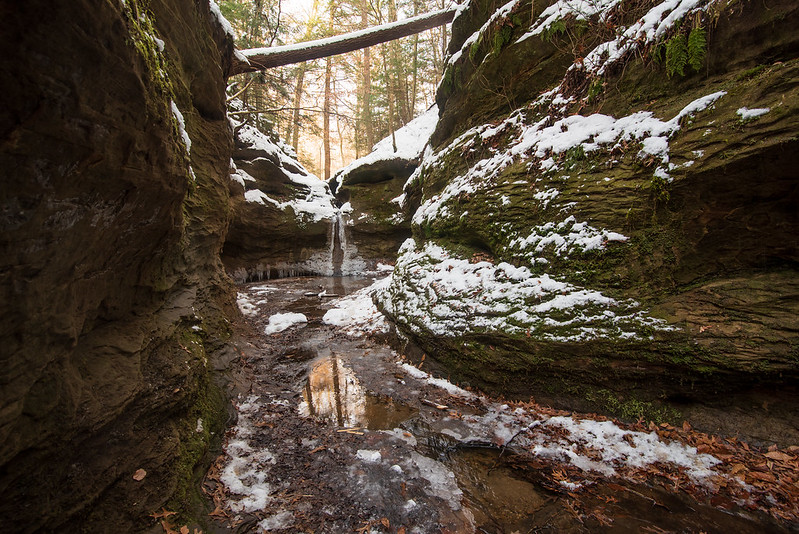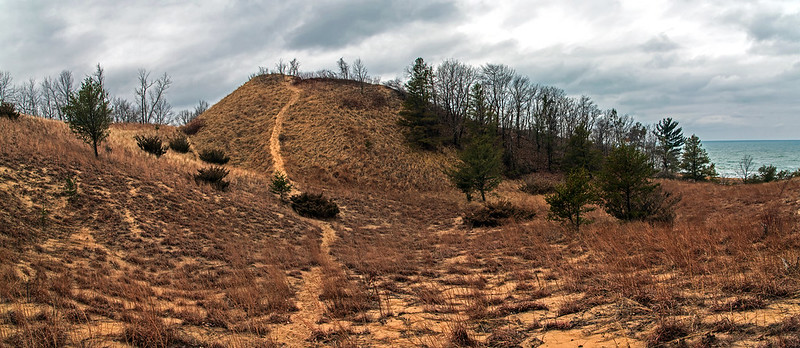
This marks the 14th anniversary of my blog. It's hard to believe it's been that long.
Generally at this time of year, the dunes are covered in snow and ice, but this winter has so far been different. The dunes are brown and seemingly dull- until you look a bit closer. In the warmer months, leaves fill the trees and block a lot of the features of the dunes themselves. Here in the photo above, you can see the transition from Lake Michigan to the wooded dunes, then to the grassy dunes. The leaf-covered ground is brown and grass-less under the trees, and the transition to the grassy area is quite abrupt. The trails are also easier to see now, as are some of the low growing plants and shrubs. There hasn't been a time I've visited this trail when I haven't discovered something new or different; and I've been hiking this dozens of times each year. Some of the grand things don't change, but if you pay attention, things change week to week all year long.
 Once we climbed the first series of dunes, we headed down into the valley, then up again on the taller dunes. Looking back, we can see the rolling dunes we traversed - hill after hill after hill, some small, others quite challenging. Carrying my usual 40 pounds of camera gear on my back, and a tripod in one had, climbing some of these trails can be difficult, especially those that pass close to shrubs and trees. I tend to get caught up on every possible branch.
Winter hiking can be a bit uncomfortable here. There are even transitions in temperature and wind. On the unprotected beach, the wind can go right through you, while in the valley between dunes, there is little or no wind. Dressing in layers certainly helps, you can keep warm while on the beach and remove some layers when in the protected areas where it gets warm. You just need to remember the old saying, warm to start, cold to finish; cold to start, warm to finish. Start off being a bit cool and try to keep from sweating, then if you're not sweating, you'll stay warm for the walk back. It's very uncomfortable on the hike back if you stay so warm at first you begin perspiring.
Still, it's well worth the time to hike the dunes in winter - even if you freeze on the way back.
Once we climbed the first series of dunes, we headed down into the valley, then up again on the taller dunes. Looking back, we can see the rolling dunes we traversed - hill after hill after hill, some small, others quite challenging. Carrying my usual 40 pounds of camera gear on my back, and a tripod in one had, climbing some of these trails can be difficult, especially those that pass close to shrubs and trees. I tend to get caught up on every possible branch.
Winter hiking can be a bit uncomfortable here. There are even transitions in temperature and wind. On the unprotected beach, the wind can go right through you, while in the valley between dunes, there is little or no wind. Dressing in layers certainly helps, you can keep warm while on the beach and remove some layers when in the protected areas where it gets warm. You just need to remember the old saying, warm to start, cold to finish; cold to start, warm to finish. Start off being a bit cool and try to keep from sweating, then if you're not sweating, you'll stay warm for the walk back. It's very uncomfortable on the hike back if you stay so warm at first you begin perspiring.
Still, it's well worth the time to hike the dunes in winter - even if you freeze on the way back.
